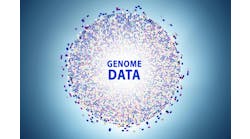The field of pharmacogenomics can help clinicians determine whether a patient is likely to metabolize certain drug treatments well or not. But one limitation in clinical practice has been that genomic lab reports tend to arrive via fax or PDF file, making them difficult to store in the EHR or compute into clinical decision support (CDS) rules. Researchers at the Northwestern University Feinberg School of Medicine have developed a prototype Ancillary Genomics System (AGS) to manage genetic test results from two external laboratories and return them to the EHR in a computable manner to facilitate CDS.
In a recent interview, Justin Starren, M.D., Ph.D. director of Feinberg’s Center for Data Science and Informatics, and Luke Rasmussen, a clinical research associate, spoke about their work on the AGS and a paper they co-authored with colleagues that was published in February 2019 in the Journal of the American Medical Informatics Association.
Some health systems have developed tools to manage the return of genetic data results, such as Partners Healthcare’s work with the GeneInsight platform, but typically they are tied to a single laboratory source, Rasmussen said. “One of the things we focused on is the situation where you are working with multiple external labs.”
The work at Northwestern was part of the eMERGE-PGx study, a grant-funded multi-center pilot of implementing pharmocogenetic sequencing into clinical practice to improve healthcare. “We collaborate and discuss our approaches,” Rasmussen explained, “but each institution was working on its own implementation of pharmacogenomic decision support.”
As part of the eMERGE-PGx study, each laboratory agreed to provide results as Microsoft Excel documents containing structured results and interpretive text. Northwestern created an importer for each laboratory that extracted participants’ results from the Excel document and stored them in a relational database. Data analysis modules converted laboratory results into “computed observations,” a synthesis of the genetic test results that describes the predicted phenotype as opposed to requiring a provider to mentally translate this from the genotype.
Starren explained the concept this way: One thing that is challenging about genomics is that although your genotype won’t change, what it means might change. “In fact, during the eMERGE project we have had guidance on particular variants change,” he said. Your doctors do not care about the particular variant, “but they do care that Clopidogrel won’t work for you,” he said. So the whole idea of a computed observation is to separate the particular variant from what it means. That makes writing the CDS rule very easy, he said. “And with the Ancillary Genomics System, when a recommendation changes, we can re-process all the results and store a new metabolizer status. The gene didn’t change, but the meaning of your gene changed.”
At Northwestern, a multi-disciplinary team, including physicians, genetic counselors, informaticians, health information technology leadership, EHR analysts and software developers, came together to work on the AGS project. In the pilot study, patients and their primary care providers received genotype results for four genes and genotype-guided prescribing information for three drugs (clopidogrel, simvastatin, and warfarin).
The AGS portal provided a web-based interface through which genetic counselors involved with the study could review and release results, the JAMIA paper noted. Users had the ability to modify the generated report if additional supporting text was needed, and the system would confirm that the patient demographics in the AGS matched those in the EHR.
Starren said the role of genetic counselors in the process may evolve. “Things are changing so fast,” he said. Sometimes there are variants of uncertain significance. “The clinicians don’t like the idea of us throwing stuff straight through at them. Having a genetic counselor look these over and sign off on them is an efficient way to vet them before doctors act on them. I am fully confident that as we gain more understanding of these variants, we will move to a model where most results go through without review and only a few have to be reviewed. That is a matter of building trust.”
When a result was released, the AGS generated an HL7 v2 observation result, which contained the laboratory test, result and descriptive interpretation report. These messages were sent to Northwestern’s EHR via an HL7 interface and displayed in the laboratory results section of the patient’s chart. Both Starren and Rasmussen agreed that this is a promising area of work for FHIR genomics going forward. They also are in the early phase of examining the possibility of commercializing the work behind the AGS.
As the researchers conclude in their JAMIA paper, “The AGS furthers the idea that complex and heterogeneous genetic and genomic results may be kept outside of the core EHR but still linked in a way that provides sufficient information to clinicians caring for patients.”
Rasmussen notes that progress toward implementing such systems in clinical environments might seem slow. “Even today the state of the art is that we have ‘progressed’ from faxing to downloading a PDF from a portal,” he said. “However, labs we have spoken to are, in general, interested in moving toward structured results, but there is still a long way to go. What is encouraging is that there is interest from the testing laboratories to explore this in the future.”
Starren added that the format has evolved to “where we are in that proverbial game of chicken, where the receivers are saying they don’t want to invest in standing up a receiver until somebody is sending, and the senders are saying they don’t want to go to the problem of building a sender until people can receive it. Both groups are waiting for the other one to flinch.”


